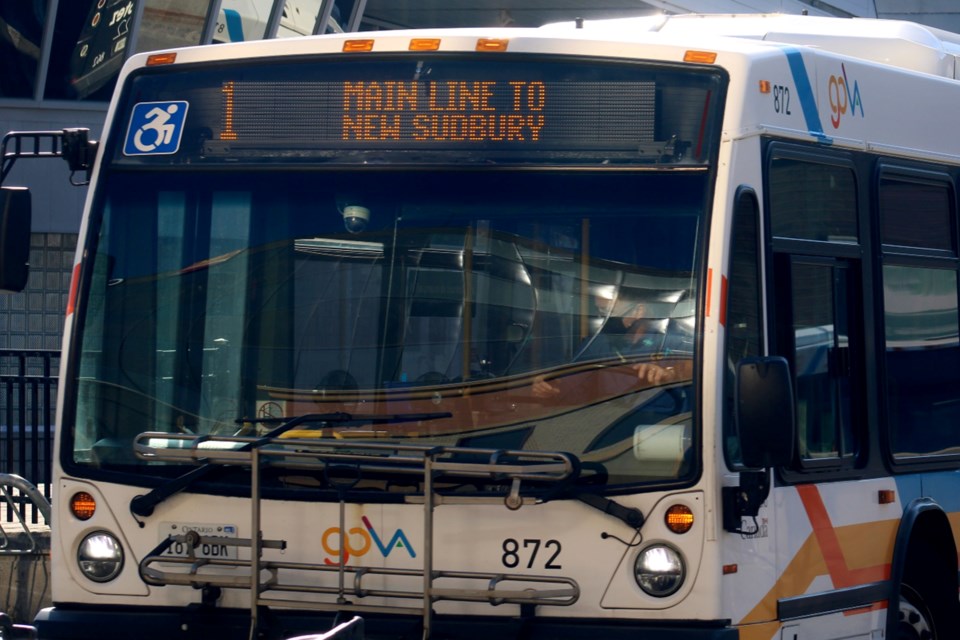With a projected 6.2 million rides delivered by GOVA Transit this year, Greater Sudbury’s public transit service hit a new record, obliterating its previous record of 5.2 million set in 2023.
This follows a pandemic-era slump that dropped to 2.4 million rides in 2021 and a pre-pandemic high of 4.6 million in 2019.
“We believe it’s because of the newcomers who came to go to Cambrian College and Laurentian University,” acting city Transit Services director Laura Gilbert told Sudbury.com following Monday’s community and emergency services committee meeting of city council.
During the meeting, she delivered a presentation on GOVA Transit to city council members which highlighted this year’s projected record-setting use.
Cambrian College enrollment is up five per cent this school year compared to last at 6,147, while Laurentian University’s enrollment is up by two per cent, at 6,490 full-time equivalents. Collège Boréal enrollment is up 22.5 per cent as of Nov. 1, to 2,350 enrollments in post-secondary programs.
GOVA Transit is appealing for students, she said, describing the spike in use as “primarily student-driven.”
“It’s affordable, it’s sustainable, there’s high-frequency service around the city so they can go to shopping malls, grocery stores, to and from school,” she said.
To accommodate recent years’ spike in use, city council members approved the addition of 11,000 annual service hours to GOVA Transit in the 2024-25 municipal budget, which added Route 106 linking downtown Sudbury with Val Therese and increased service to Garson.
Route 11 Donovan/Collège Boréal links to Cambrian College and has increased in use from the city’s fifth-busiest to third-busiest route, Gilbert said, prompting GOVA Transit to add a Barrydowne Express route to their system to decrease the number of at-capacity buses.
GOVA Transit also has stand-by drivers whose buses can follow at-capacity vehicles to collect passengers who are left behind when buses reach capacity.
“We knew that congestion on buses was rising, so we had to make an effort to ensure customer experience was improving,” Gilbert said. “It’s becoming more reliable as more service gets added.”
This year’s spike in public transit use came in spite of last year’s city council decision to increase fares by 50 cents per ride to $4. Meanwhile, the city has estimated that people evading transit fares is costing the city $407,000 annually, prompting city council to approve the hiring of two part-time municipal law enforcement officers.
GOVA Transit’s cost recovery is approximately 38.6 per cent, which exceeds the city’s target of 22 per cent. This makes this year’s total net municipal operating cost approximately $17.5 million. The service’s gross cost is projected at approximately $28.5 million this year and revenue is $11 million.
Other recent changes to GOVA Transit has been the installation of next-stop route information screens in all 59 buses and the replacement of all 1,101 signs at GOVA Transit stops with larger signs with QR codes that can be scanned by smartphones for accessibility features.
Tyler Clarke covers city hall and political affairs for Sudbury.com.




